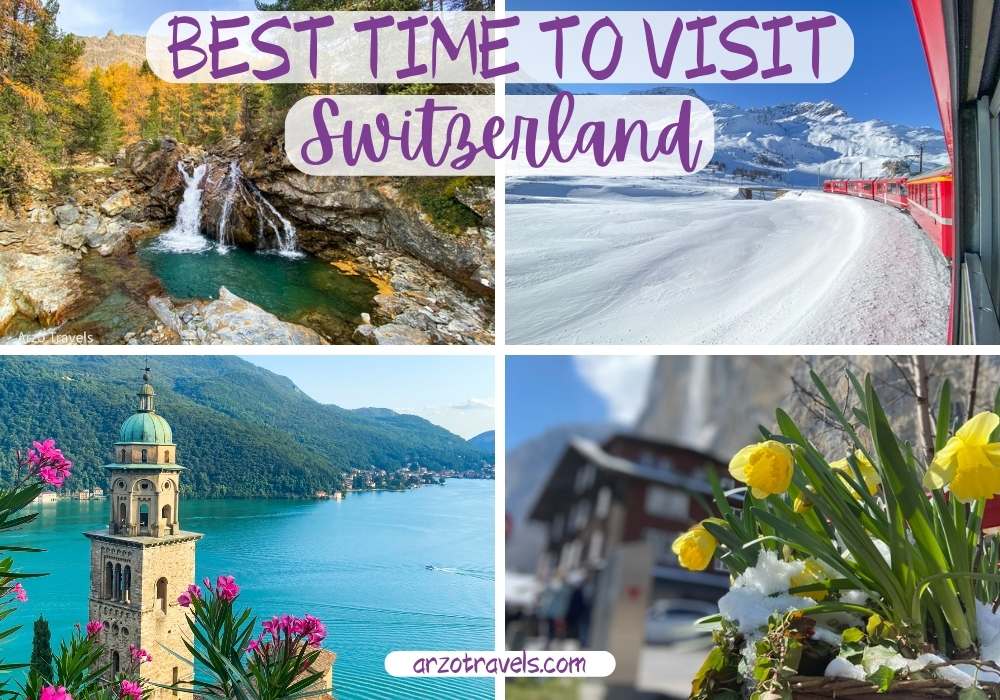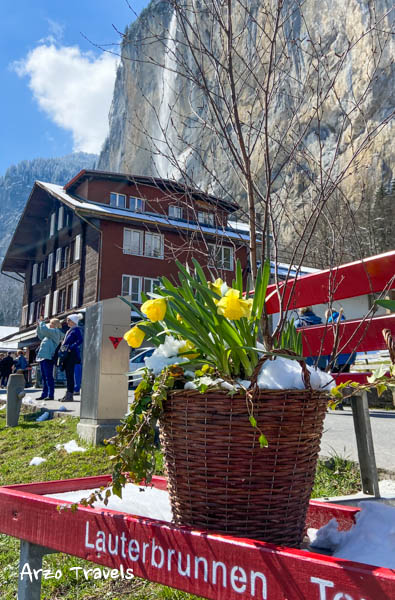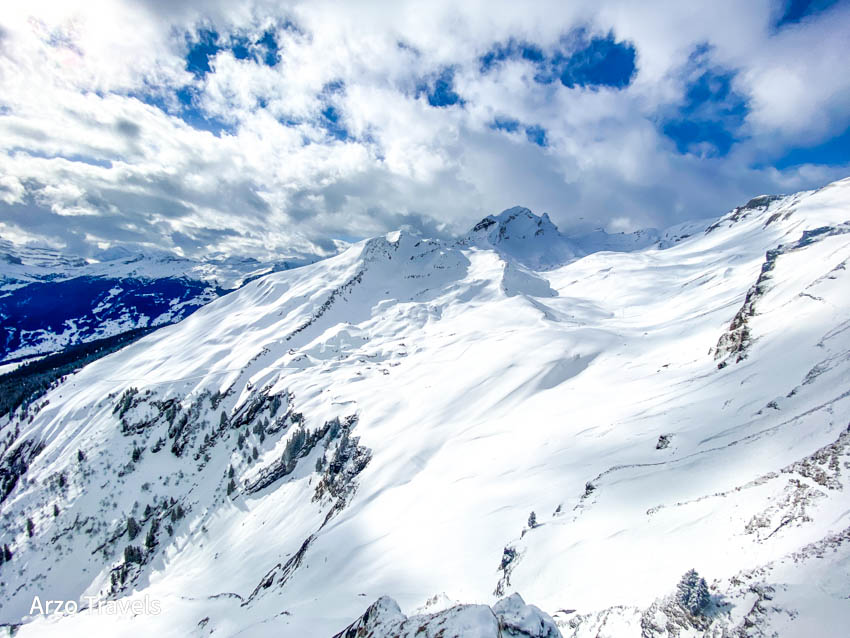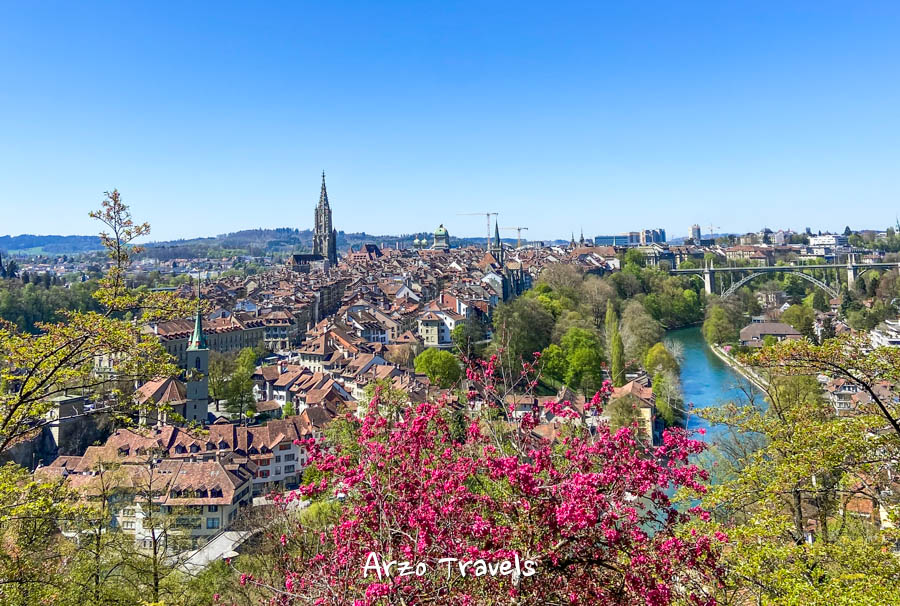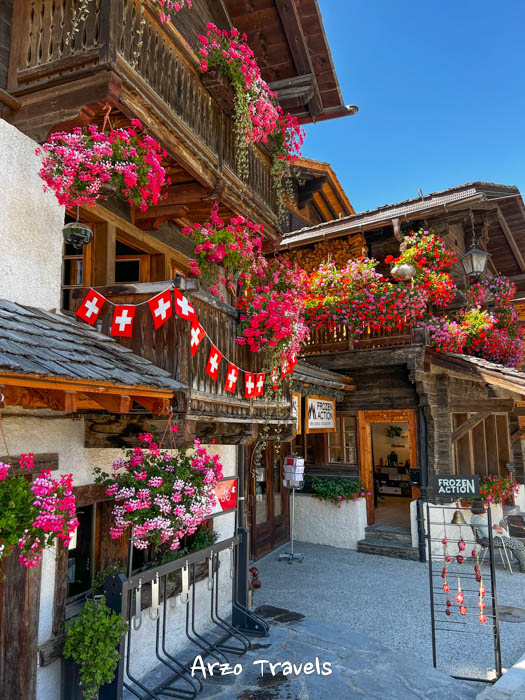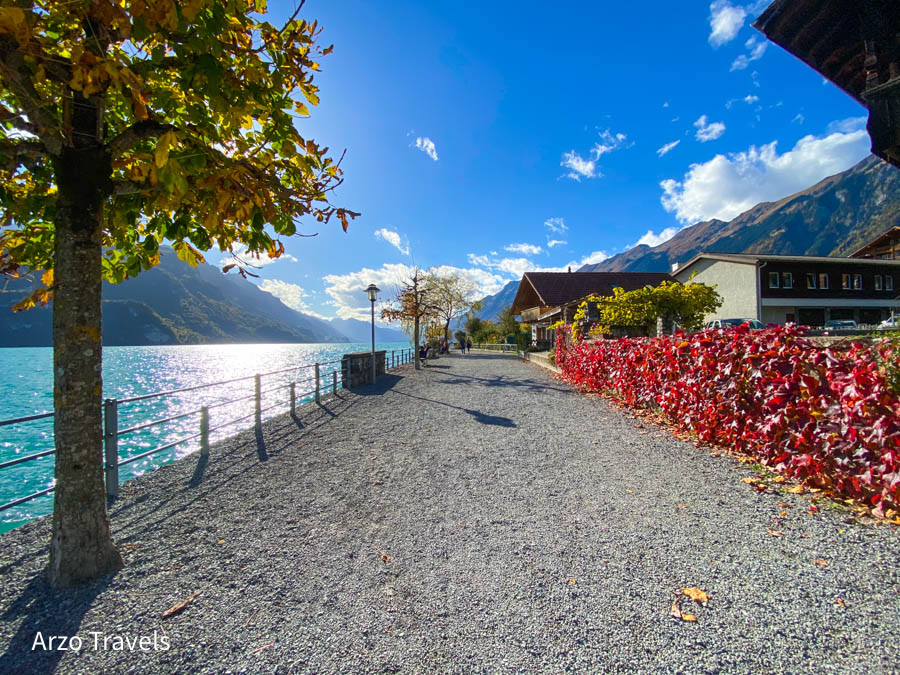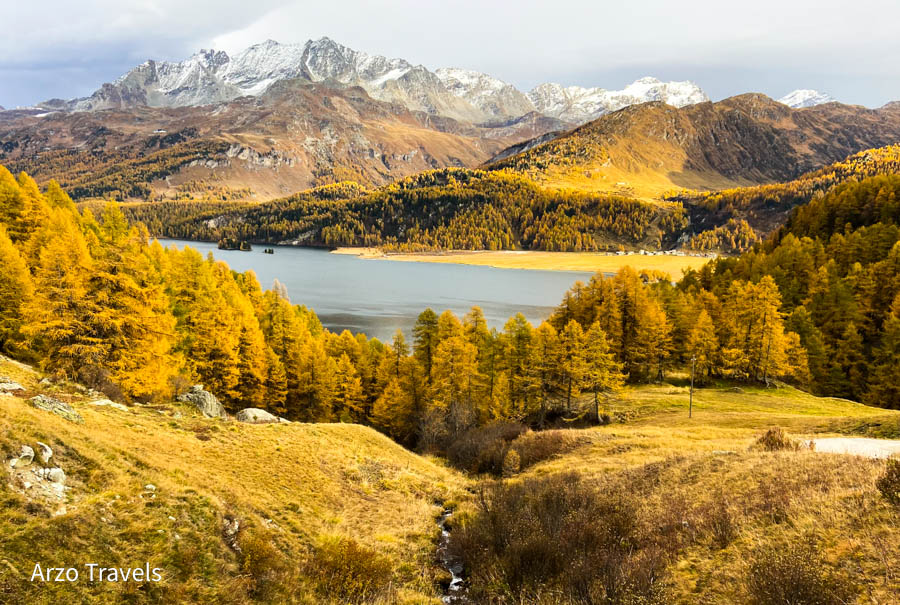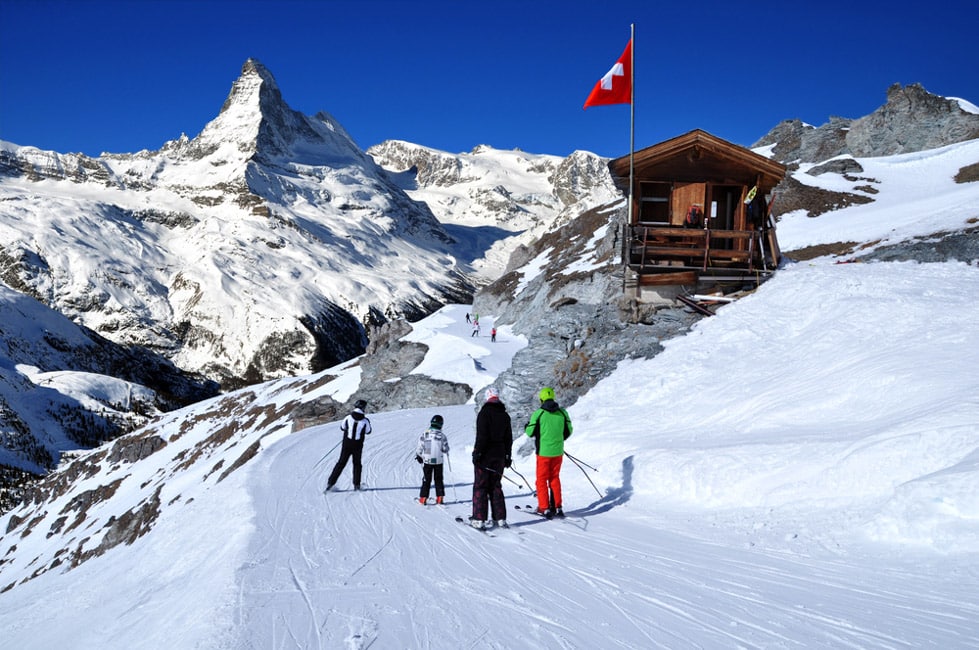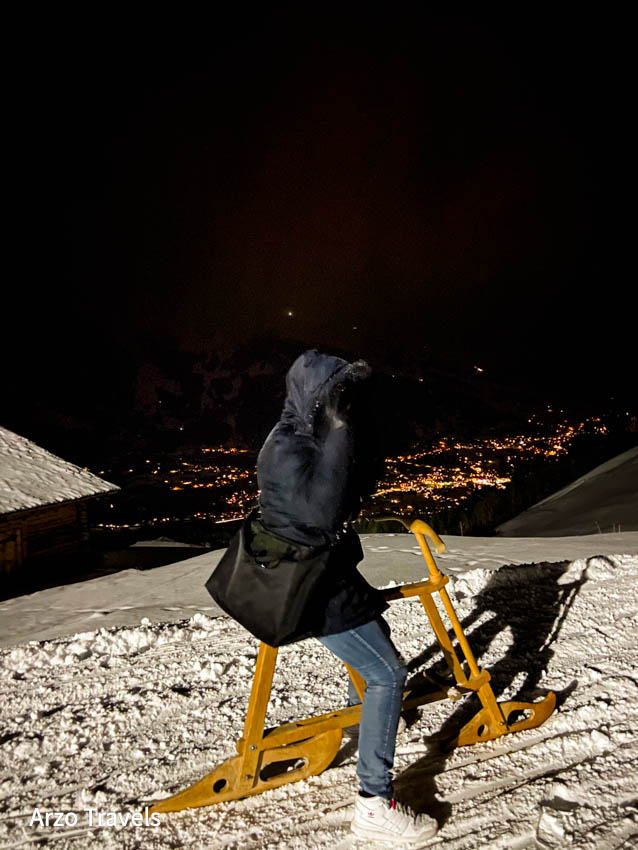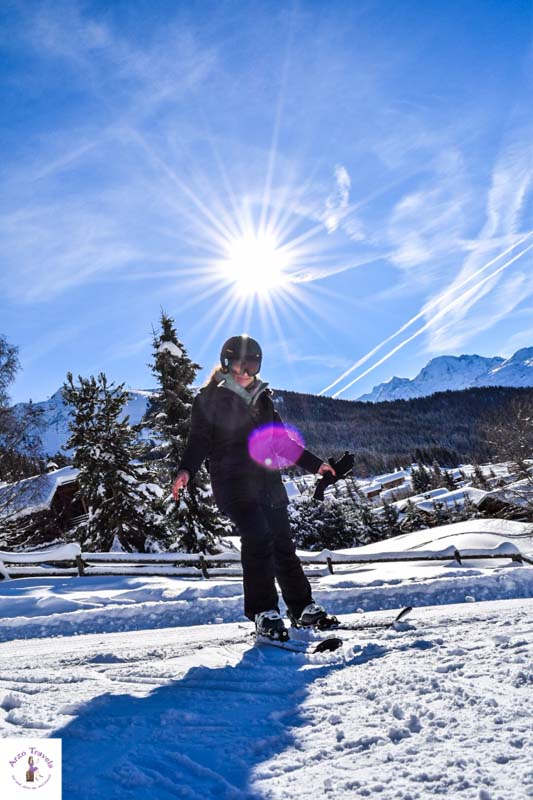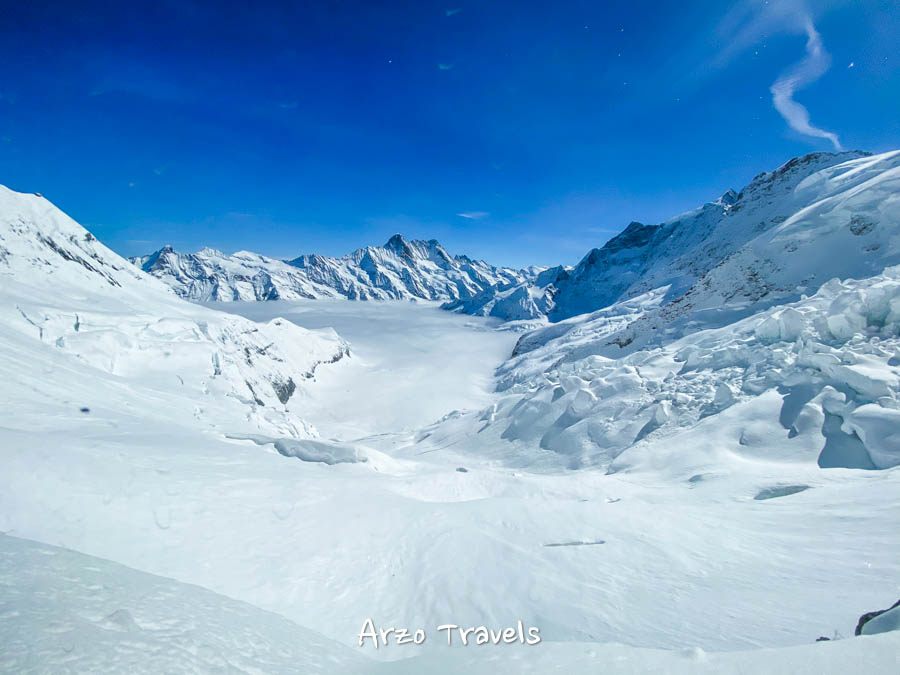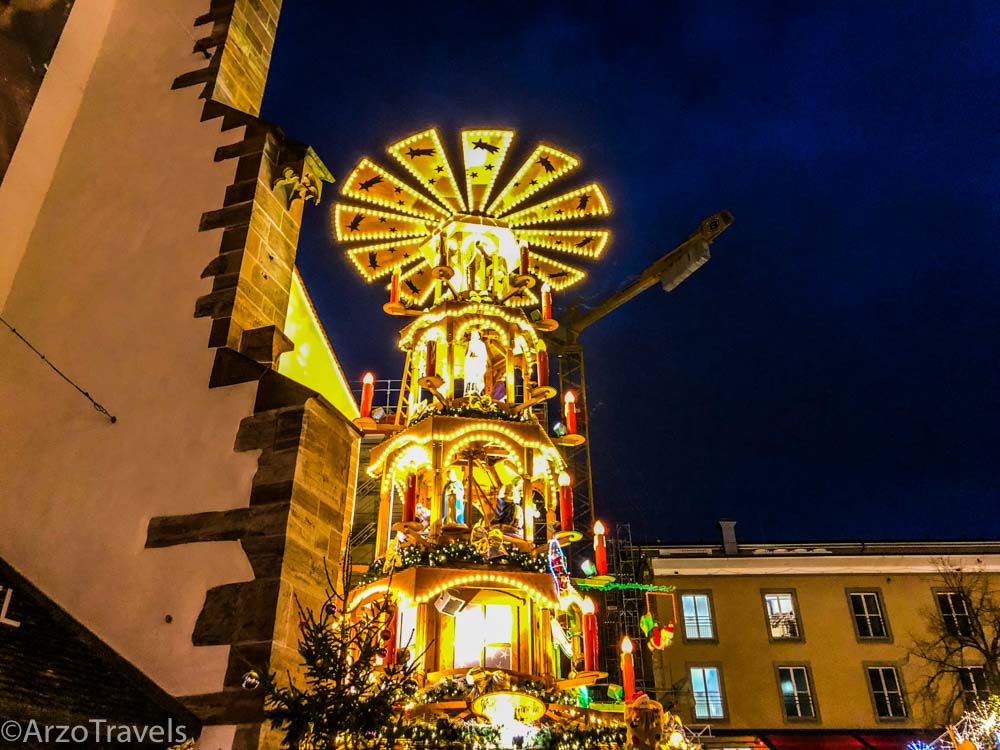WHEN TO GO TO SWITZERLAND – BEST SEASON TO VISIT & MORE
So, when you plan your Switzerland itinerary and wondering about the best time to visit Switzerland, it is crucial which season (and month) you will choose. The seasons in Switzerland are very unique and each season has its charm.
As a Switzerland addict, I have visited Switzerland many, many times. In spring. In summer. In fall. And in winter. And I love each season – there is not really a bad time to go to Switzerland. However, it really depends on what you are looking for – in terms of activities and landscapes – which will influence the best time to visit Switzerland for you.
Here you will find some tips for each season – info on the climate, but also tips for activities during the distinct seasons and more. I will also share my opinion about the best month to visit Switzerland (yes, I have a strong opinion on that one) and the worst months to visit (yes, I also do have a strong opinion on that).
A little disclaimer: You will find general info on the climate and weather for each season in Switzerland – for different areas. However, I want to emphasize that we can never rely on the weather in Switzerland.
I experienced some terrible days of rain and storms in the summer months of July and August – while I had the best weather (warm and sunny without any rainy days in between) whenever I visited in September and October, as well as in December and January.
BEST TIME TO VISIT SWITZERLAND
So, without further ado, find out the best travel time for Switzerland.
SPRING SEASON IN SWITZERLAND
Let´s start with the beautiful springtime in Switzerland.
- Spring is from the mid- March to mid-June
Spring is a low season in Switzerland.
In the Swiss Alps, many gondolas/cable cars and some mountain passes (especially important if you plan a road trip) might still be closed and open later in spring (mid-April or even later). Some other attractions, like castles, might also still be closed.
This time of year, the scenery is not yet stunningly green (which you will see in summer), yet there are several activities you can do already. The tourist season begins in May, but Swiss cities make good places to visit even before that, with beautiful blossoming throughout the country.
Surrounded by blooming trees, the county’s many hiking routes are gorgeous in the spring. Though some hikes might not be possible in early spring, many hiking paths open, especially later in spring. Thus, spring is a perfect time to explore them and take in the distant views of the snow-capped Alps – the months of April and May are great for nice walks and hikes and some more outdoor activities.
Eastern (in 2024, Easter Sunday is on the 31st of March, and in 2025, it is on the 21st of April) is also the ideal occasion to try some of the tons of chocolate made in Switzerland.
Since there are not that many visitors yet in the country, prices for accommodations are lower than in the summer or winter months (but it is still expensive after all). Check out some budget tips for your Switzerland trip. These are reasons enough to visit during shoulder season – but here is some more info.
Climate in Spring in Switzerland & What To Expect
Spring in Switzerland lasts from the middle of March until mid-June, with daily highs and lows between 46°F (8°C) and 74°F (20°C).
On the Swiss lowlands, springtime begins with an increase in daily average temperatures up to 48°F (9°C). The warmest cities are Geneva and Zurich, whereas Berne is a few degrees colder. High-altitude, mountainous locations remain extremely cold, although temperatures in major tourist destinations rise above zero (around 32°F/0°C).
March‘s weather can be rather challenging. The typical March temperature in lowland cities like Zürich, Geneva, and Lugano is 48°F (9°C). Higher elevations in the Alps typically experience colder temperatures; in Zermatt, for instance, the average temperature for March is only 25°F (-4°C).
However, April delivers consistent warming, particularly to the west and south. While it is barely 30°F (-1°C) at higher-altitude Zermatt, the typical April temperature in low-altitude cities like Zürich, Geneva, and Lugano is roughly 56°F (13°C). However, the likelihood of showers also rises.
May typically has temperatures of around 62°F (17°C) in low-altitude places like Geneva. However, you’ll find conditions around 53°F (11°C) in highland villages like Valais.
Things to do in Switzerland in Spring
✔️ Grindelwald First is the perfect destination from mid-March to mid-April to enjoy some time in the snow.
✔️ Bern is a great place to see the gorgeous cherry blossom for about two weeks in late March
✔️ Sion is an underrated, yet gorgeous town in south Switzerland with great weather – and here you have more blossoming
✔️ Check out my Spring in Switzerland guide for more activity tips
SUMMER SEASON IN SWITZERLAND
- From mid-June to mid-September
The summer is the busy season in Switzerland – it is perfect for hiking the outdoors or spending time at/on the lakes, doing adventurous activities like white water rafting, paragliding, and much more.
Switzerland in the summer months means you will also see all shades of green – the scenery is at its best during these months.
The season’s also a period of a lot of regional celebrations (including the main event, which is the 1st of August). In light of this, summer is the season for cultural tourism in Switzerland – this is also why it gets really busy and especially places like Zurich, Lucerne, Interlaken, or even Zermatt get crowded.
The summer months are a good time to go to Switzerland, because of the abundance of attractions/activities and Switzerland´s impressive scenery. Basically, everything is open – hiking paths, mountain passes, museums, mountain huts, and more. You can have a wonderful time even in the higher altitudes where it gets warmer.
And if you have always dreamed about winter sports in the Alps, you will be pleased to hear that there are some places where you can do that even in the summer months!
However, summer can also be quite rainy (I actually would even say it is the rainy season though I do not have any data for my claim) and destinations can be crowded – especially in July and August which will also result in long lines for gondolas/cable cars/museums, etc. Prices for accommodation increase and still, some hotels might be fully booked weeks/months in advance.
Even though there are some downsides, the summer months – whether it is June, July, August, or September – are a good time to see Switzerland.
My tip is to come in September. Then you might experience the warm weather and can do all the summer activities without rubbing shoulders with other visitors, and you also expect lower accommodation prices.
Climate in Summer in Switzerland & What To Expect
Generally speaking, the summer season is dry and warm, with humidity varying with altitude. However, June is usually the wettest month in Switzerland. The high-altitude areas experience the most rainfall, with lower-location places raining less frequently.
Northern and central regions like Bern typically see temperatures between 66°F and 75°F (19 and 24°C) in June because they’re at lower altitudes. The heat index in the higher altitude south, in a town like Agno, can reach 89°F (32°C). Even the highest temperature is, nevertheless, comparatively pleasant.
Countrywide, lakes are open during the summer swimming season, which starts in July. Lake Geneva’s water temperature is the lowest, at about 68°F (20°C).) Lake Zurich is a bit warmer at about 73°F (23°C). And thanks to its water temperature of 79°F (26°C), Lugano is a swimming paradise.
The final month of summer in Switzerland is August, which is hot but, on average, slightly cooler than July. Although temperatures can differ according to altitude, it is not unusual for lower-lying places to experience July highs of 95°F (35°C). In August, high altitudes like Saas Fee feature an average high of 58.1°F (14.5°C), although snow starts to fall too.
Things to do in the Swiss Summer
Here are a few activities I suggest for the summer season in Switzerland.
✔️ Do the epic Pizol hike.
✔️ Spend time at the lakes and do boat cruises – Lake Thun, Lake Brienz, or Lake Lucerne are just some of the amazing Swiss lakes.
✔️ Celebrate the 1st of August – the Swiss National Day which means you will see fireworks all over the country.
✔️ Visit Grimentz, the most beautiful village in the country, and from there, hike around the impressive Lake Moiry.
✔️ Spend time in/on/at one of the many, many lakes in Switzerland – summer is a great time to take a dip in one of the lakes like Caumasee.
✔️ Check out my Summer guide for Switzerland to find out more.
✔️ Visit the world-famous Montreux Jazz Festival
So, is summer the best time to visit Switzerland? That could be, but hear me out.
FALL SEASON IN SWITZERLAND
- From mid-September to mid-December
Fall in Switzerland marks the beginning of a calmer low season with fewer crowds. Even the cows, who spend the summer grazing on the mountaintop pastures, return to the Swiss valleys.
While I do consider December as the winter season, December only starts on the 21st of the month. Many cantons prepare for the winter season or hibernate until spring and – thus, from mid-October, many cable cars/gondolas do not operate anymore, and some museums/attractions close.
HOWEVER, early fall is the best season to visit Switzerland. This is actually my favorite time of the year – Switzerland in the fall is AMAZING!
Fall foliage is next level in Switzerland. Also, some regions in Switzerland, like Ticino at the Italian border, tend to get extremely hot in the summer months, and fall is much better – because of its milder climate – to explore that region. Also, lower prices in accommodation and fewer tourists, resulting in shorter lines for gondolas/museums are additional reasons to add Switzerland in the fall to your bucket list!
Thus, I recommend visiting in late September and the first two weeks in October if you can! Yes, September and October are the best months to visit Switzerland. After that, it can get really grey and “dead” – if you ask me, I will not suggest visiting in November.
But December in Switzerland is a great time (and half of the month is still considered to be the fall season) because it is the Christmas season – and visiting the famous Swiss Christmas Markets are reason to visit.
Climate in Fall in Switzerland & What To Expect
As September approaches its end, there’s still a mild warmth supported by clear skies with no precipitation. The country’s central areas get some downpours, and the mountains get their first snowfall. You can expect strong winds, sporadic showers, night frosts, and declining temperatures in October.
In Switzerland, the weather can change quickly, especially in the fall. With typical highs between 60 and 70°F (15 and 21°C) and lows between 50 and 60°F (10 and 15°C) throughout most of the nation, September is the warmest month of the fall season.
October is significantly cooler, with typical highs between 50 and 60°F (10 and 15°C) and lows between 30 and 40°F (-1 and 5°C). Even in October, temperatures in high-altitude communities like St. Moritz can fall below 32°F (0°C) at night. While it’s 37°F (2.5°C) in high-altitude Zermatt, it’s roughly 56°F (13°C) on average in Geneva, Lugano, and Zürich, with warmer temps if the sun is out.
The national average temperature in Switzerland drops to between 35 and 44°F (2°C and 7°C) as the season changes in November. This is typical of low-lying areas like Zurich. In Geneva, the temperature can drop below 35°F (2°C) but soar to about 48°F (9°C).
Things to do in the Fall in Switzerland
Here are a few suggestions for what to do in the fall – and why I think, fall is the best season to visit Switzerland.
✔️ Visit the gorgeous hidden gem of Valposchiavo – home to some of the most beautiful lakes in Switzerland
✔️ Ride the Bernina Express – it is one of the most scenic train rides in the world and though spectacular at any time of the year, fall is the best time to enjoy the train ride.
✔️ Explore the Swiss hidden gem of Valley Maggia in Ticino – home to gorgeous waterfalls, villages, and more. This valley is a must-see in the fall.
✔️ Check out more awesome fall activities in Switzerland.
WINTER SEASON IN SWITZERLAND
- From mid-December to mid-February
Winter is when Switzerland shines, with an abundance of opportunities for skiing and other popular winter activities. After summer, the winter is another peak season in Switzerland.
Without a question, Switzerland is one of the best places for winter sports – whether you are a beginner, advanced, or expert – here is something for everyone. Even though the weather is cold, you can easily warm up with a cup of hot chocolate or find an activity to keep you going. The ski season here is rather long – starting somewhere in December and lasting up until April (depending on the season).
You have the famous Swiss Christmas Markets that often open at the end of November and last until Christmas. These Christmas Markets are some of the best in the world, so do not be surprised to see them full of people from all over the world. To experience a White Christmas you should plan for a couple of days in a nice hut in higher altitude places like Zermatt, St.Moritz, the Jungfrau Region, or anywhere in the Swiss Alps.
Many “light festivals” also take place in the winter months, so even if you visit after December, you can experience some beautifully illuminated places all around the country.
Climate in Winter in Switzerland & What to Expect
Swiss winters are often cold, with January and February the months with the most snowfall. As always, low-altitude areas experience less snow than their highland counterparts. While the daily lows and highs differ by region, you can expect averages between 14°F (-10°C) and 42°F (5.6°C) throughout.
Temperatures in Switzerland in December range from 30 to 40°F (-1°C to 4°C), making it an extremely chilly country. The typical high temperature in lowland cities like Lugano, Zurich, and Geneva ranges from 29 to 41°F (-1.6°C to 5.4°C). Areas at a higher altitude, like St. Moritz, are substantially colder with the average high temperature reaching just 25°F (-4°C).
In January, the average temperature in the northern plains ranges from 30 to 25°F (-1 to -4°C). This is usually where you find the lowest altitudes in Switzerland, in places like St. Gallen. Centrally in Sachseln and the like, you’ll find temperatures between 20.3°F (-6.5°C) and 33.4°F (0.8°C). Move further south towards Geneva and you’ll find conditions ranging from 32.2°F (0.1°C) to 41.5°F (5.3°C).
February is one of the best seasons to ski in Switzerland because snow is essentially the only weather factor. The daily average temperature is about 42°F (6°C), while the overnight temperature is about 28°F (-2°C). If you’re traveling to the Alps, expect temperatures between 8°F (-12.8°C) and 23°F (-4.6°C).
Of course, the days are shorter in the winter, and until late January, the sun sets before 5 PM. Therefore, people who wish to maximize their time should try to get to the slopes early.
Things to do in Switzerland in Winter
Switzerland in winter is a fantastic time for some of the following activities.
✔️ Winter sports – whether you head to Verbier, St.Moritz, Murren, Zermatt, or any of the other top Swiss winter destinations, there is an abundance of places to ski and snowboard.
✔️ If you prefer some unique winter sports, then try Velo Gemmel in Grindelwald. Yes, it is a kind of snow bike. Weird, and such a unique Swiss winter activity.
✔️ The Jungfraujoch – one of the top mountain excursions in Switzerland, is always worth a trip but in winter, the panorama from the highest train station in Europe is even better with all the snow-capped mountains around.
✔️ St.Moritz is one of the premium destinations – no matter which mountain excursion you enjoy, amazing winter views are guaranteed (with clear skies).
✔️ But it is not also about views and winter sports – Switzerland is home to some of the best Christmas Markets in Europe, you can choose from the ones in Zurich, Basel, Bern, and many more.
✔️ Lucerne has lots to offer during the winter months – a unique event is the Lilu festival which takes place in January (11 – 21 January 2024) for about two weeks where artists from all over the world will present the diverse and fascinating facets of light.
✔️ So, if you are into Christmas Markets, or enjoy winter wonderland, then winter is the best time to visit Switzerland.
✔️ Check out my winter guide for Switzerland for more info.
FINAL THOUGHTS ON WHEN TO VISIT SWITZERLAND
As you can see, Switzerland does not have a bad time to visit – there are months, that I personally find less fun and appealing (which are mostly November, January, and February) and some are better months to visit (which are the months of May, June, July, September, and October as well as December) but one thing is for sure:
You will always find an abundance of activities to do in Switzerland, regardless of the month of your visit and it will not get boring at all!
I hope this post has helped you find out about the best time to visit Switzerland – and when to go.
READ MORE:
- Bern in the winter guide
- Check out this guide if you’re visiting Geneva during the winter
- 5-day Switzerland itinerary
- Best train rides in Switzerland
